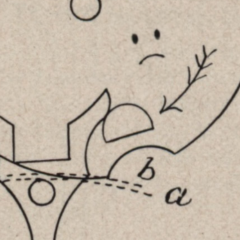New hobbyist checking in
-
Recently Browsing
- No registered users viewing this page.
-
Topics
-
Posts
-
This is the old/first(?) way for making a mainspring for an automatic. "Evolution-wise" it is an logical first step forward from a standard spring. Usually these are indeed replaced with a new spring with an integrated/fixed bridle. Lubrication as you would do with any automatic.
-
I'm working on a Schild AS 1250 (a 'bumper' automatic) and it's the first time I've seen a mainspring like this. It has what looks like a regular manual-wind mainspring with a 'hook' at its outer extremity. On a manual-wind watch that 'hook' would engage with a 'hook' in the barrel wall to prevent it from rotating. However, the AS 1250's mainspring does not engage directly with the barrel but rather with a 'sliding bridle' that sits between the mainspring and the barrel wall, and evidently facilitates the slip necessary in an automatic. I'm not sure what advantage this two-piece configuration provides, but it highlights a gap (one of many) in my horological knowledge. I'm not sure if 'hook' is the correct term as used above, but please see photo below to see what I mean. Therefore, two questions please. 1. What is the proper way to lubricate a barrel from an automatic watch with a sliding bridle? My guess is the same as any automatic ms/barrel (e.g, a few dabs of braking grease on the interior barrel wall). What do the experts say? 2. I purchased a Generale Ressorts GR3472X mainspring, made for the AS 1250. It looks like the bridle is included and I don't need to salvage and re-use the old one. Is this a safe assumption? Thanks for the advice. If you have any other wisdom you'd like to share about separate sliding mainspring bridles, I would be very interested. Cheers!





Recommended Posts
Join the conversation
You can post now and register later. If you have an account, sign in now to post with your account.
Note: Your post will require moderator approval before it will be visible.